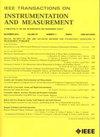机器人焊接的主动视觉传感方法:回顾、教程与展望
IF 5.6
2区 工程技术
Q1 ENGINEERING, ELECTRICAL & ELECTRONIC
IEEE Transactions on Instrumentation and Measurement
Pub Date : 2024-10-23
DOI:10.1109/TIM.2024.3485460
引用次数: 0
摘要
视觉传感系统是焊接机器人实现智能和自主焊接的最重要部分之一。与被动视觉传感方法相比,主动视觉传感方法具有更高的精确度,因此在机器人焊接中被广泛采用。本文全面综述了用于机器人焊接的主动视觉传感方法。根据其用途,最先进的主动视觉传感方法可分为四类:焊缝跟踪、焊缝缺陷检测、三维焊池几何形状测量和焊接路径规划。首先,回顾了这些主动视觉传感方法的原理。然后,介绍了用于智能焊接机器人的主动视觉传感系统的三维校准方法,以填补相关领域的空白。最后,比较了所综述的主动视觉传感方法,并根据其优缺点提出了展望。本文章由计算机程序翻译,如有差异,请以英文原文为准。
The Active Visual Sensing Methods for Robotic Welding: Review, Tutorial, and Prospect
The visual sensing system is one of the most important parts of the welding robots to realize intelligent and autonomous welding. The active visual sensing methods have been widely adopted in robotic welding because of their higher accuracies compared to the passive visual sensing methods. In this article, a comprehensive review of the active visual sensing methods for robotic welding is given. According to their uses, the state-of-the-art active visual sensing methods are divided into four categories: seam tracking, weld bead defect detection, 3-D weld pool geometry measurement, and welding path planning. First, the principles of these active visual sensing methods are reviewed. Then, a tutorial on the 3-D calibration methods for the active visual sensing systems used in intelligent welding robots is given to fill the gaps in the related fields. At last, the reviewed active visual sensing methods are compared and the prospects are given based on their advantages and disadvantages.
求助全文
通过发布文献求助,成功后即可免费获取论文全文。
去求助
来源期刊

IEEE Transactions on Instrumentation and Measurement
工程技术-工程:电子与电气
CiteScore
9.00
自引率
23.20%
发文量
1294
审稿时长
3.9 months
期刊介绍:
Papers are sought that address innovative solutions to the development and use of electrical and electronic instruments and equipment to measure, monitor and/or record physical phenomena for the purpose of advancing measurement science, methods, functionality and applications. The scope of these papers may encompass: (1) theory, methodology, and practice of measurement; (2) design, development and evaluation of instrumentation and measurement systems and components used in generating, acquiring, conditioning and processing signals; (3) analysis, representation, display, and preservation of the information obtained from a set of measurements; and (4) scientific and technical support to establishment and maintenance of technical standards in the field of Instrumentation and Measurement.
 求助内容:
求助内容: 应助结果提醒方式:
应助结果提醒方式:


